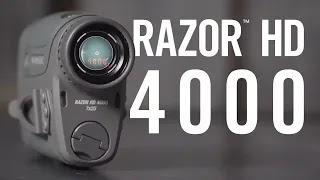In the world of technology, there are countless innovations that continue to reshape various industries. One such advancement that has significantly impacted fields such as surveying, construction, hunting, and even golfing is the laser rangefinder. This remarkable device revolutionizes the way we measure distances, offering unparalleled accuracy and convenience. In this blog post, we'll explore the fascinating world of laser rangefinders and delve into their numerous applications and benefits.
The Basics of Laser Rangefinders
At its core, a laser rangefinder is a handheld or tripod-mounted device that uses laser technology to accurately determine the distance between two points. The device emits a laser beam towards the target, and by measuring the time it takes for the beam to return, it calculates the distance with remarkable precision. This modern approach to measuring distances has completely transformed various industries, replacing traditional methods that were often time-consuming and less accurate.
Applications in Surveying and Construction
Surveying and construction professionals rely heavily on laser rangefinders for their ability to provide precise measurements in both indoor and outdoor settings. These devices allow surveyors and engineers to quickly and accurately determine distances between objects, buildings, and landmarks. Whether it's for determining property boundaries, calculating slope distances, or creating topographic maps, laser rangefinders have become an indispensable tool in these industries. Their portability and ease of use make them ideal for on-site measurements, saving time and increasing efficiency.
Enhancing Outdoor Activities
Laser rangefinders have also found popularity in outdoor activities such as hunting, golfing, and shooting sports. Hunters use rangefinders to accurately gauge the distance to their prey, ensuring precise and ethical shots. Golfers benefit from rangefinders by obtaining accurate yardage to hazards, greens, and flags, helping them make better club selections and improve their overall game. Similarly, competitive shooters rely on laser rangefinders to measure the distance between the shooting position and the target, aiding in precision and accuracy during practice or competitions.
Benefits and Advantages
The advantages of laser rangefinders are manifold. Firstly, their ability to provide highly accurate measurements within a matter of seconds is unmatched by traditional methods. This accuracy is crucial in industries that demand precision and reliability. Additionally, laser rangefinders are incredibly portable, lightweight, and user-friendly, making them easy to carry around and operate. Most models also come equipped with features like angle compensation, allowing users to account for elevation changes when calculating distances. Some advanced rangefinders even offer built-in GPS functionality, enabling users to measure distances with reference to specific points on a map.
Future Developments and Conclusion
As technology continues to advance, we can expect further enhancements in laser rangefinder capabilities. Improved battery life, extended measurement ranges, enhanced weather resistance, and integration with other devices are just a few potential areas for development. The ever-increasing demand for precise measurements in a wide range of industries will undoubtedly drive innovation in laser rangefinder technology.
In conclusion, laser rangefinders have become indispensable tools in fields that rely on accurate distance measurements. From surveying and construction to outdoor activities like hunting and golfing, these devices provide unmatched precision and convenience. As the technology continues to evolve, we can look forward to even more advanced features that will further streamline and improve our ability to measure distances accurately. The laser rangefinder is truly a game-changer in the world of distance measurement



.png)



0 Comments